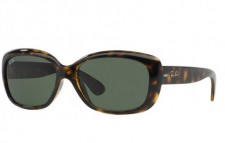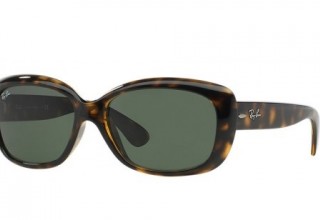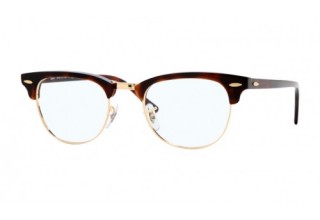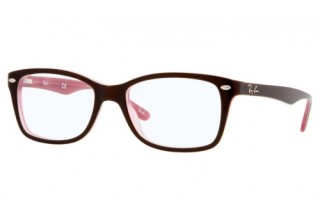Myeyewear2go.com: Do Ray-Ban Sunglasses Really Have Glass Lenses?

MIDDLESEX, N.J., January 15, 2018 (Newswire.com) - Ray-Ban's reputation as the gold standard in sunglasses stems in large part from their commitment to using the highest-quality materials to manufacture their products. One of the many ways that Ray-Ban stands out from the competition is their use of crystal lenses to provide the highest degree of clarity and durability. Below is a look at the benefits of crystal lenses and some key steps to take to ensure that you prolong the life of a pair of new crystal lenses.
Are Ray-Ban's crystal lenses the same as glass lenses?
Many people use the terms crystal and glass interchangeably when referring to sunglass or eyeglass lenses. While this is not entirely inaccurate, Ray-Ban no longer manufactures lenses that are 100 percent glass. However, they offer crystal sunglass lenses, which are manufactured with a 50/50 mix of glass and polycarbonate. Crystal lenses are often referred to as glass lenses since they technically contain glass. Ray-Ban began offering crystal lenses to provide outstanding clarity while optimizing safety for the consumer.
Are Ray-Ban sunglasses with crystal lenses hard to find?
The majority of Ray-Ban sunglasses now feature polycarbonate lenses. However, Ray-Ban currently manufactures two sunglass models with crystal lenses. They include the Ray-Ban G-15 lens, which has a rich, dark green undertone, and the Ray-Ban B-15 lens, which has a deep brown undertone. Both lenses are available in men's or women's sunglasses. Both the G-15 and the B-15 are compatible with a variety of sunglass frame styles and are available in a polarized version for people seeking ultra-crisp vision.
What are the benefits of sunglass lenses that contain glass?
With polycarbonate accounting for the majority of today's sunglass lenses, one may wonder why Ray-Ban offers sunglasses with lenses that are made with glass. In addition to the ability to offer sunglasses with a lens that is thinner, yet denser, Ray-Ban strives to meet the needs of clientele seeking cutting-edge clarity and durability in their sunglasses Below are three benefits of investing in Ray-Ban sunglasses with crystal lenses:
1) Crystal sunglass lenses provide unparalleled clarity.
Lenses that contain glass offer a degree of clarity that cannot be matched with other lens materials. Crystal lenses have a relatively small amount of Abbe compared to plastic lenses. This helps to eliminate color spread and optimize clarity in lenses.
2) Crystal lenses are more resistant to scratches and superficial damage.
Customers have trusted the Ray-Ban name since 1937. Over the past 80 years, Ray-Ban has established itself as the global leader in sunglass manufacturing in part due to their commitment to superb manufacturing. Ray-Ban continues to use glass in their sunglass lenses because it helps create a surface that is incredibly durable and scratch-resistant.
3) Crystal sunglass lenses provide superb contrast.
While people tend to wear their sunglasses in bright lighting conditions, Ray-Ban recognizes that wearers might sometimes transition to spaces with less light. Crystal lenses are ideal for such situations, as they provide excellent contrast in conditions with lower levels of lighting.
When are sunglasses with polycarbonate lenses a better fit?
While crystal sunglass lenses are a testament to Ray-Ban's commitment to quality, there are situations in which a person may wish to consider Ray-Ban sunglasses with polycarbonate lenses. Polycarbonate is a form of plastic that is increasingly popular among Ray-Ban and other sunglass manufacturers because it is highly impact-resistant. Below are some situations that might call for Ray-Ban sunglasses with polycarbonate lenses:
- People seeking the lightest weight Ray-Ban sunglasses
- Sunglass wearers who are notorious for dropping or mishandling their sunglasses
- Athletes and other highly mobile people seeking sunglasses that do not weigh them down
Five Keys to maintaining Ray-Ban's crystal lenses
Properly caring for the crystal lenses used to construct Ray-Ban sunglasses is vital to prolonging the life of sunglasses. Because crystal lenses might break more easily upon impact, pay special attention to proper handling and storage. There are five general steps to focus on to ensure that glass Ray-Ban lenses stand the test of time. They are as follows:
1) Following All Manufacturer Instructions
The single best way to protect Ray-Ban sunglass lenses is to follow all manufacturer recommendations. Ray-Ban sunglasses are typically packaged with a small pamphlet that outlines instructions for proper care and handling. One should be sure to carefully review and follow all key points and keep the pamphlet in a secure location.
2) Proper Handling
Whether the Ray-Ban sunglass lenses are crystal or polycarbonate, one should utilize the utmost care when handling them. In general, sunglasses should not be left unattended. Below are a few handling tips for handling glass lenses:
- Do not place sunglasses on a bathroom counter while applying makeup or bathing
- Avoid wearing sunglasses on top of the head
- Resist the urge to put sunglasses on a moving object or vehicle
- Do not put sunglasses in pants pocket or one might sit on them
- Store sunglasses in the same location whenever they are not being used.
3) Gentle Cleaning
By regularly cleaning crystal lenses, one will keep their Ray-Ban sunglasses looking as sharp as they did when they were first purchased. Fortunately, cleaning crystal lenses requires no more than a mixture of warm, soapy water and a lint-free cloth. Allowing sunglasses to soak for 5-10 minutes is helpful in removing any bacteria that has gathered on the lens surface.
4) Protection and Storage
The most effective way to protect sunglasses is to invest in a high-quality storage case. There are many types of cases that offer an affordable means of keeping sunglasses clean and intact while they are not in use. Common types of storage cases include the following:
- Hardshell storage cases with zipper enclosures
- Medium or soft shell cases with belt clips
- Decorative storage bags with drawstring closures
Inspect the sunglasses regularly for signs of damage and scratches that obstruct your view. Never put off addressing problems with the sunglasses, as procrastination could result in irreparable damage. Issues that require prompt attention include the following:
- Lenses that feel loose or are not a proper fit
- Loose or broken sunglass hinges
- Missing screws
Source: Myeyewear2go


